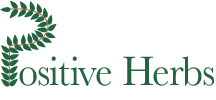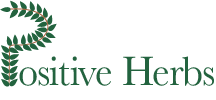A brief guide to historical information of European Herbal Medicine.
Herbal Medicine is the oldest form of medicine known, and dates back thousands of years. For early man, plants were the most easily available source of food, and their use in treating disease was probably discovered incidentally. Such discoveries would be passed down from generation to generation, forming a body of knowledge that developed into the traditional usage of herbs in medicine. The knowledge of healing plants was passed down to a particular person or family. Thus herbalists came into existence.
There is much historical evidence revealing the use of herbs by early man. The Stone Age “iceman” Oetzi discovered frozen in the Austrian Alps several years ago, carried with him a “first aid kit” including two small pieces of birch fungus, which is still used today to stop bleeding and disinfect wounds + other herbs, berries and fire making kit, proving that they used natural medicine. In the Middle Ages herbal lore used to be concentrated in the monasteries, with monks cultivating herb gardens for healing the local people. St. Hildegard of Bingen, an 11th century Swiss abbess, owned a large garden of medicinal herbs, and even imported herbs from the Indies.
Ibn Sina changed the whole attitude of medicine from superstition to MODERN medicine. He was born in 980 and died in 1037, his book “Canon of Medicine” was the first book to deal with evidence-based medicine, randomised controlled trials, efficacy, medications and the understanding of clinical pharmacology. His doctrine was the use of knowledge to heal the people, his ideas are still used today because they are correct.
Today, many of the herbs used in earlier times are still popular, in many cases still being used for the same conditions, but sometimes their traditional use has been superseded by a modern one. In his “Historie of Plants” (Herbal), John Gerard (1545-1612) gives a recipe for an oil of St. John’s Wort, for use in healing wounds. This is still used as a vulnerary (wound healer) today, but the herb is more generally known for its use as a remedy for mild to moderate depression.
Nicholas Culpeper was another herbalist who worked in this period; being a radical he refused to patent his work and published in English so the people of modest means could treat themselves cheaply. At this time most medical information was in Latin, he considered this to be a “closed shop” and so wasn’t available to the poor masses – for them it was charity if you could get it or help yourself. He was hated by Apothecaries……..who wanted him tried for Witchcraft!
With the advent of scientific analysis, we have knowledge of chemical constituents of herbs, so that we can understand better how they work. However, because herbs are so complex, in contrast to orthodox drugs which are usually just a single chemical constituent, research into the mechanism of a particular herb in its action on the human body can be very difficult, as there are so many variables involved. Despite this, we know much more nowadays about herbal remedies that our forbears discovered by practical use. How herbs work in current use is often confirmed by the traditional use of the particular plant.
As a Qualified Medical Herbalist I can take herbal consultations for a range of conditions- You can contact me to discuss your particular situation. REMEMBER, there are hundreds of herbs with different actives that could be used in your ailments.
Although there are many conditions in which herbal medicine could be used, in the case of cancer and STD’s the treatment is best left to orthodox professions. However herbs can be used as an adjunct to treatment of cancer, for example in alleviating the side effects of the therapies.

